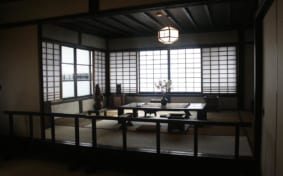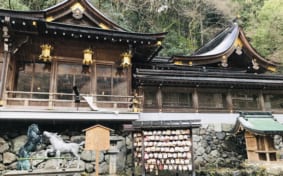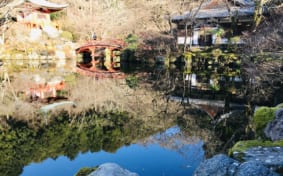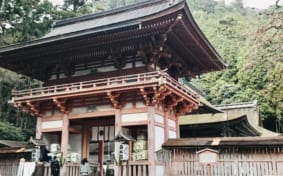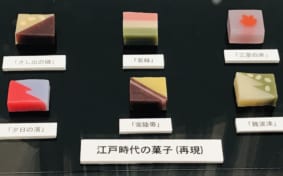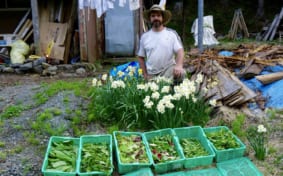The Kamogawa River – Kyoto's Popular, Tranquil Resting Spot
On any given day, the banks of the Kamogawa are flourishing with activity, and depending on the season, you’ll find a variety of people walking dogs or cycling.
Kanjiro Kawai – A Kyoto Sanctuary in Demanding Times
His works are notable for the unconventional shapes and designs as well as the philosophy he puts in creating them – he believes in what he calls ‘ordered poverty.’
Things To See, Do Near Fushimi Inari Taisha
There’s more to the area than the renowned temple. Being a convenient Kintetsu or Keihan train ride from Osaka, and south of Kyoto city itself, it’s well worth the trip to Fushimi. The first thing you’ll notice when you arrive is that it’s a quaint, picturesque and peaceful place, compared to the hustle and bustle of Kyoto city, or even Fushimi Inari—at least it was when I visited.
Meditation at Shorinji Temple, Kyoto – Calmness of the Mind Through Zazen
To be able to absorb the wholeness of the Japanese spirit, experiencing a brief moment of Zazen meditation can be quite bracing and uplifting. At the Shorinji Temple in Kyoto, regarded as the oldest Buddhist temple in Kyoto built in 712, visitors are allowed to engage in Zazen meditation sessions by reservation.
Best Places to Eat Japanese-Style Vegan in Kyoto
At most vegan restaurants in Japan the ingredients aren’t always obvious. And many of the top 100 vegan restaurants listed online are mostly popular for their proximity to tourist destinations, or that make Western-styled foods such as tacos or burgers. This article highlights the three best places to eat in Kyoto that have a more authentic Japanese twist to them.
Mountain Hike to Kifune Shrine and Kurama Temple
A memorable and exhilarating trip to Kifune Shrine and Kurama Temple up the mountains of Northern Kyoto was a perfect way to close the year in preparation for the New Year. Although the winter chill made the walk and climb quite challenging, it should be very pleasant during other seasons, such as autumn and spring when the forests beam with mesmerizing colors of maple leaves and cherry blossoms.
3 Kyoto Temples Off the Beaten Path
For non-first time Kyoto travelers who seem to feel that the over-visited Kiyomizu-dera, Ginkakuji, Kinkakuji, Heian Shrine, Fushimi-inari Shrine, or Arashiyama have become too cliché for tourism, there are other numerous worthwhile treasures in Kyoto to explore, quite off the beaten path.
Hiyoshi Taisha – A Hidden Shrine Within Mt. Hiei, Kyoto
Established over 2100 years ago in the 7th year by Emperor Sujin, its rustic structures not only exude the antiquity of the site, but the sprawling territory housing approximately 40 small shrines within various sections is absolutely impressive. It is definitely worth visiting since it is known to be the head shrine in the largest shrine network in Japan that is comprised of about 4,000 shrines nationwide.
Kyogashi Confectionary Museum and Tawaraya Yoshitomi – The Charm of Kyogashi Sweets
Kyoto is especially known for traditional sweets, particularly colorful (pink, green, yellow, beige, light purple) higashi dry confectionery shaped as leaves, flowers, fruits or Japanese crests, which usually accompany a bowl of matcha tea during tea ceremony.
Kyoto Organic Farmer Life–Sustainable Organic Farm Tour
One Kyoto local has taken the tourism boom as an opportunity to provide a sustainably-focused day tour from Kyoto. Chuck Kayser, moved to Kyoto over 20 years ago and has been organic farming for 11 years. He is also a member of Seeds of Sustainability Kyoto, a group which hosts events throughout the city promoting sustainable ideas.
Forest Bathing in the Footsteps of the Masters on Mt. Atago in Kyoto
A stroll through Mt. Atago in Kyoto gives travelers a refreshing and relaxing stroll through spectacular nature and the Japanese spiritual mindset.
Fushimi Momoyama Castle and the Tomb of Emperor Meiji
The original Fushimi Castle was completed in 1594 but was destroyed two years later by an earthquake. It was quickly rebuilt, and then under the control of Torii Mototada, a vassal of Tokugawa Ieyasu, in 1600, the castle fell in a famous and significant siege by Ishida Mitsunari (the commander of the Western Army at the famous Battle of Sekigahara).


